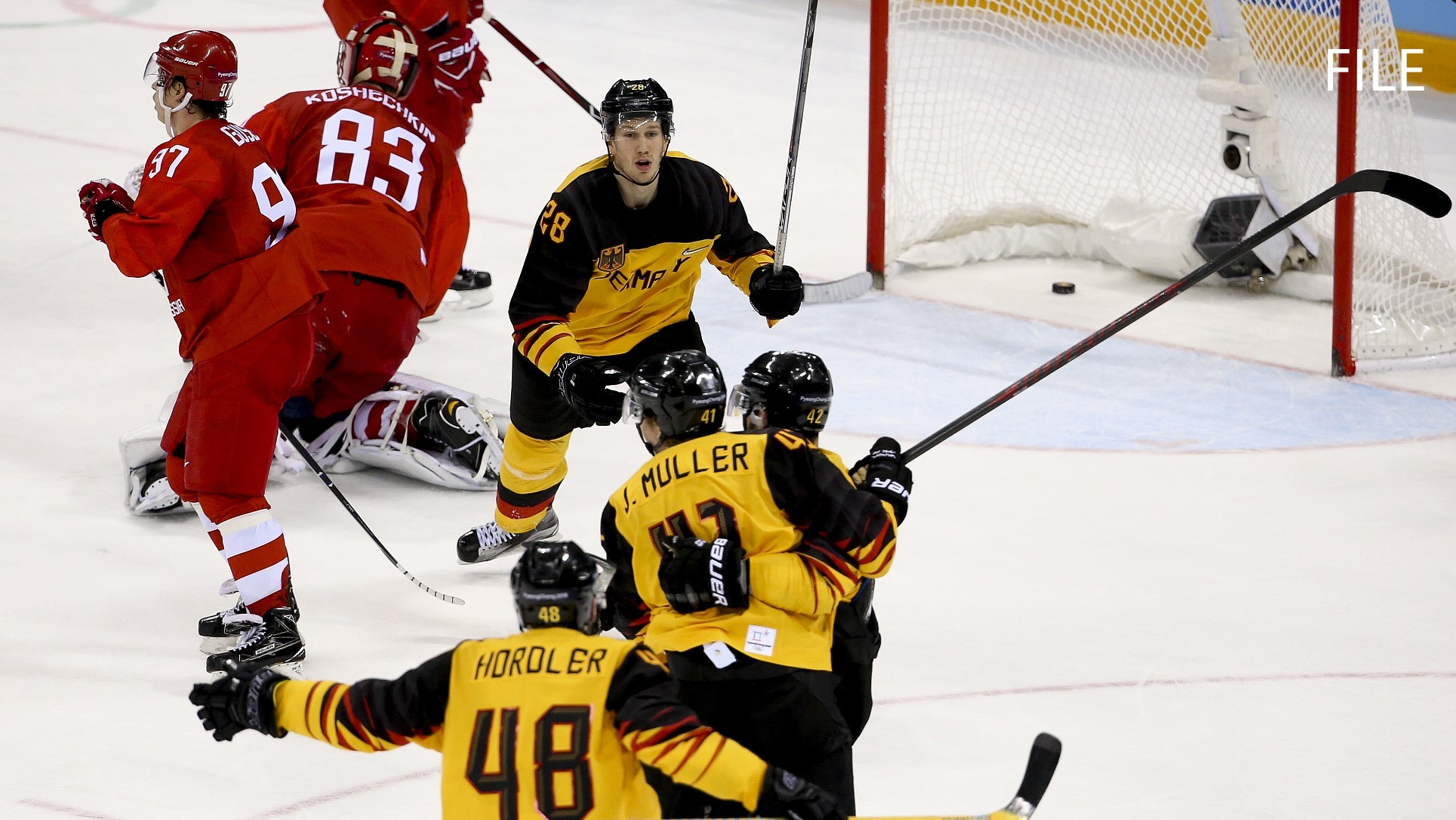
Sports
21:25, 06-Jan-2019
IIHF considers smaller, NHL-sized rinks for future events
Updated
21:06, 09-Jan-2019
Li Xiang

Rene Fasel, president of the International Ice Hockey Federation (IIHF), said in a news conference on Saturday that he wanted to introduce smaller rinks to future ice hockey events including the 2022 World Championship in Finland and the 2022 Winter Olympics in Beijing to make the sport more exciting.
Currently the National Hockey League (NHL) uses rinks measuring 200 feet × 85 feet while international events prefer bigger ones of 197 feet × 98 feet. The 2019 World Junior Championship introduced the smaller surface which Fasel believes made the matches more exciting. The IIHF boss thus suggested increasing the use of smaller rinks in the future.

German players (yellow) celebrate after scoring a goal against Russia (red) during the men's ice hockey tournament final at the 2019 Winter Olympics in PyeongChang. /VCG Photo
German players (yellow) celebrate after scoring a goal against Russia (red) during the men's ice hockey tournament final at the 2019 Winter Olympics in PyeongChang. /VCG Photo
"In Beijing 2022, if (the NHL) is there, we will ask the organizers to play on the small ice. And in Finland in 2022 we will play on small ice at our world championship. The future is having the best players of the world playing on the small ice. Why should we not be playing on the small ice?" said Fasel.
The larger rink decreases body contact and increases travel distance, resulting in less scoring. By contrast, a smaller rink could accelerate the pace and make the matches more physical, which is one of the reasons why fans love ice hockey.
"We should be flexible. It is possible to do it. To extend is more difficult than to make it smaller," said Fasel.

Connor McDavid (C) of the Edmonton Oilers is stopped on a shot by Jonathan Quick (#32) of the Los Angeles Kings as Derek Forbort (#24) defends during the third period of the game at Staples Center on January 5, 2019. /VCG Photo
Connor McDavid (C) of the Edmonton Oilers is stopped on a shot by Jonathan Quick (#32) of the Los Angeles Kings as Derek Forbort (#24) defends during the third period of the game at Staples Center on January 5, 2019. /VCG Photo
Fasel's remarks could mean more than making the surface bigger. Having allowed players to go to Nagano, Turin and Sochi for the Winter Olympics, the NHL said "no" to PyeongChang in 2018, which put the ice hockey tournament then into the shade. Though money and injury concerns were also behind the NHL's decision, the IIHF boss' suggestion of introducing smaller rinks to which the league's players were more accustomed was the start of getting the world's best ice hockey players back to the Olympics.
Interestingly, some in North America are suggesting bigger surfaces so that the matches could see less injuries. It could take years to realize the idea of either side because a small difference in rink size could mean a much bigger change in playing style for teams.

SITEMAP
Copyright © 2018 CGTN. Beijing ICP prepared NO.16065310-3
Copyright © 2018 CGTN. Beijing ICP prepared NO.16065310-3